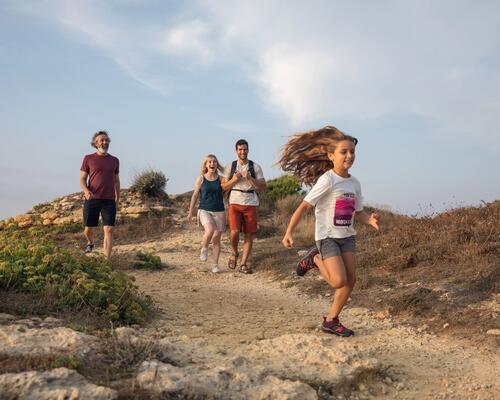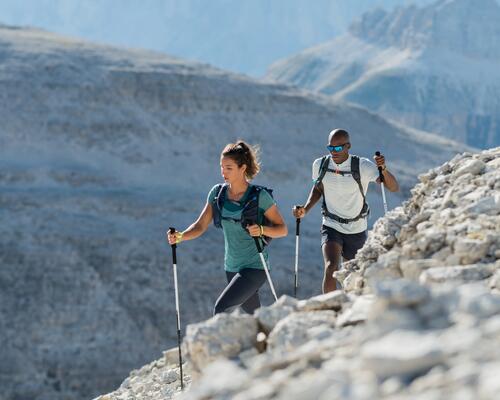- Travel light with appropriate, lightweight equipment
If you want to move fast, there is only one solution: you have to hike light! Unlike traditional hiking equipment, speed hiking equipment is noted for its low weight, beginning with the shoes, which are essential for safety. Speed hiking models have a combination of strength in order to 'grip' the terrain, low weight to facilitate your movement, and flexibility so that your foot motion is smooth and you feel unrestricted when you want to speed up. Do you like to descend rocky slopes at a fast pace? The toe protections on the footwear will protect you from stones!
What's more, you should leave any backpacks with a capacity greater than 25L behind as they will be much too bulky for speed hiking. A lightweight bag featuring a low compression strap to keep the weight close to your body so that it does not move about is much better suited. Also, a backpack with a built-in hydration pack will allow you to quench your thirst without disrupting your all-important stride.
As for your clothing, opt for a jacket with a breathable fabric and a system of zipped air vents so that you can adjust the airflow according to your effort level and the environment (sun, shade, wind, etc.)
As for your legs, carbon hiking poles will relieve your legs during long hikes. To learn how to use them, check out our advice!
Now that you are kitted out, you can jump to it this spring in your favourite outdoor setting!


